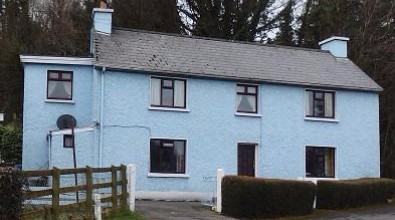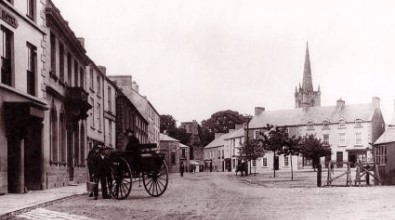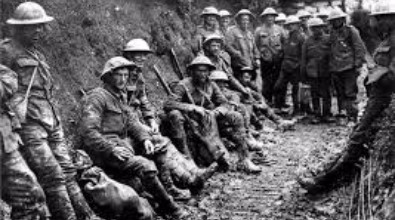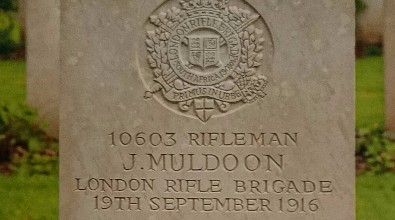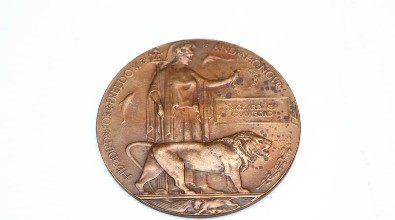War does not determine who is right - only who is left.
MY EXPERIENCE
Introduction
At the beginning of Transition Year, I was chosen to represent Co. Donegal in a project that involved adopting a soldier from your native county, that was killed during the Battle of the Somme. I had written an application specifying why I would be suited to having a place in this unique project. One student will each represent a soldier from their own county. The project includes a trip to the Somme battlefields in Northern France to visit the graves of our adopted soldiers.
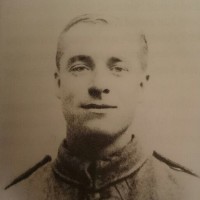
JOHN MULDOON
My history teacher and the coordinator of this project, Mr. Gerry Moore assigned the Soldier John Muldoon to me. Firstly, I got in contact with John's relatives. I met Seamus Muldoon who is John's nephew. He put me in contact with another relative named Patrick Meehan, a writer for the Donegal Democrat who knew the history of John's life. Patrick helped me gather information and photos that were relevant.
First Meeting in Collins Barracks
On March 7th all participants met in Collins Barracks, Co. Dublin. All participants first met on this day. We also presented information that we gathered on our individual soldiers to each other.
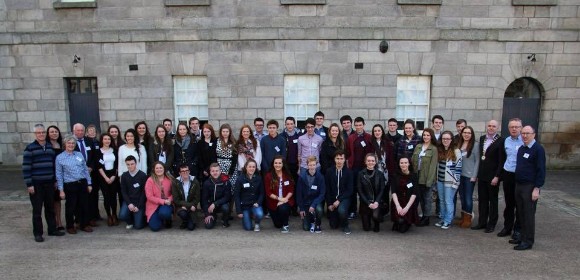
Launch in collins barracks
Developing an Archive
Next we searched through the names of soldiers with no known graves. There were seventy two thousand in total. We then carefully picked out every Irish soldier from the list, which would be made into an archive of all Irish soldiers that fought in the war.

